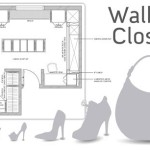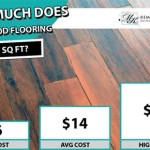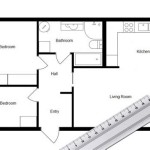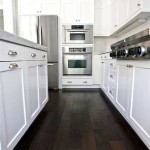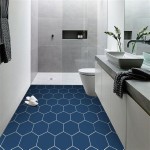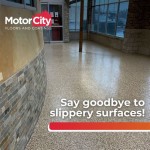Carlisle Wide Plank Floors: Understanding the Cost
Carlisle Wide Plank Floors are renowned for their beauty, durability, and the unique character they bring to any space. Characterized by planks significantly wider and often longer than standard hardwood flooring, Carlisle floors elevate the aesthetics of a room, offering a sense of luxury and spaciousness. However, this premium quality comes at a corresponding price point. Understanding the factors that influence the cost of Carlisle wide plank floors is critical for homeowners, designers, and contractors considering this flooring option for their projects.
The cost of Carlisle wide plank floors is not a fixed figure. It varies based on numerous considerations, including the species of wood chosen, plank dimensions, grading, finish, installation method, and the geographical location of the project. A thorough understanding of these elements allows for more accurate budgeting and informed decision-making throughout the flooring selection and installation process.
Key Factors Influencing the Cost of Carlisle Wide Plank Floors
Several factors contribute to the overall cost of Carlisle wide plank floors. These include the type of wood, the dimensions of the planks chosen, the specific grade and finish applied to the flooring, and the complexities involved in the installation process itself. Managing these elements effectively is crucial for achieving the desired aesthetic outcome within a predefined budget.
Wood Species: The type of wood is a primary cost driver. Common options include hardwoods like oak (red or white), maple, walnut, cherry, and ash. Less common, exotic options are also available. Each species exhibits unique visual characteristics, hardness ratings, and inherent availability. For instance, walnut and cherry are generally more expensive than oak due to slower growth rates and limited availability. In addition, the specific cut of the wood, such as rift sawn or quarter sawn, can also impact the price due to differences in yield and grain appearance. Rift and quarter sawn cuts are typically more stable and aesthetically consistent, leading to higher costs. Consider the aesthetic goals alongside the budgetary constraints when selecting a wood species.
Plank Dimensions: Plank dimensions, specifically width and length, play a significant role in the overall cost. Carlisle Wide Plank Floors are known for their generous proportions. Wider and longer planks generally command a higher price. This is because sourcing wider boards requires larger, older trees, which are less abundant. Furthermore, longer planks require more careful handling during milling, drying, and transportation to prevent warping or damage. The increased material and labor associated with achieving these dimensions naturally translate to a higher per-square-foot cost. The thickness of the plank also contributes; thicker planks provide greater stability and longevity but necessitate more raw material.
Grade and Finish: The grade of the wood refers to its appearance and the presence of natural characteristics like knots, color variations, and mineral streaks. Higher grades, such as select or clear, exhibit minimal imperfections and are typically more expensive. Lower grades, like rustic or character grade, showcase more pronounced natural features and are often more affordable. The finish applied to the flooring affects both its appearance and durability, and consequently, its cost. Pre-finished floors, finished at the factory, offer convenience and consistent quality control, but generally carry a premium compared to unfinished floors that are finished on-site. The type of finish, whether it's an oil-based, water-based, or UV-cured urethane, also influences the price. Durable, low-VOC finishes may incur a higher initial cost, but offer long-term value through reduced maintenance and improved environmental performance.
Installation Costs Associated with Wide Plank Flooring
The installation of Carlisle Wide Plank Floors represents a significant portion of the overall project cost. The complexity of the installation process, influenced by factors such as subfloor preparation, installation method (nail-down, glue-down, or floating), and the intricacy of the room layout, directly affects the labor costs involved.
Subfloor Preparation: Proper subfloor preparation is crucial for the successful installation of wide plank flooring. The subfloor must be level, clean, and dry to prevent issues such as squeaking, unevenness, or moisture damage. Depending on the existing subfloor condition, this may involve leveling compounds, plywood underlayment, or moisture barriers. Addressing these issues adds to the overall cost but is essential for ensuring the longevity and performance of the flooring. Accurate assessment of the existing subfloor is a vital first step in the installation process.
Installation Method: The choice of installation method impacts both the cost and the performance of the flooring. Nail-down installation is a traditional method that involves securing the planks directly to the subfloor with nails or staples. Glue-down installation uses adhesive to bond the planks to the subfloor, providing a more stable and solid feel. Floating installation involves interlocking the planks together without mechanically fastening them to the subfloor. Each method has its advantages and disadvantages in terms of cost, ease of installation, and suitability for different subfloor types and moisture conditions. For instance, glue-down installations are often recommended for wider planks to minimize movement and potential gaps, but they can be more labor-intensive and expensive than floating installations.
Complexity of Room Layout: Intricate room layouts with numerous corners, angles, and obstructions increase the labor required for installation. Precise cutting and fitting of the planks are necessary to achieve a seamless and professional finish. This added complexity can significantly impact the installation time and cost. Furthermore, additional considerations such as transitions between different flooring types or the integration of floor vents require careful planning and execution, further influencing the overall expense.
Additional Cost Considerations
Beyond the core elements of material and installation costs, several other factors can impact the total expense of a Carlisle Wide Plank Floors project. These include regional pricing variations, delivery and handling charges, waste allowances, and potential removal and disposal costs of existing flooring. Careful planning and consideration of these factors are crucial for accurate budgeting.
Regional Pricing Variations: The cost of Carlisle Wide Plank Floors can vary depending on the geographical location. Factors such as local market demand, labor rates, and transportation costs influence pricing. Areas with higher costs of living or limited availability of skilled installers may experience higher prices. Obtaining quotes from multiple suppliers and installers in the specific region is advisable to get a realistic assessment of the prevailing costs.
Delivery and Handling Charges: Delivering wide plank flooring requires specialized handling due to the size and weight of the planks. Transportation costs can be substantial, especially for long distances. In addition, unloading and staging the flooring at the job site may require additional labor and equipment, further contributing to the overall expense. Clarifying delivery and handling charges with the supplier is essential early in the planning process.
Waste Allowance: During installation, a certain amount of material is inevitably wasted due to cuts, mistakes, and imperfections. A waste allowance, typically ranging from 5% to 10%, should be factored into the material order to ensure sufficient flooring is available to complete the project. The waste allowance may need to be increased for complex installations or when using planks with significant character variations that require careful selection and placement. Unexpected shortages can lead to delays and additional costs, making it prudent to plan for an adequate waste allowance.
Removal and Disposal Costs: If existing flooring needs to be removed before installing Carlisle Wide Plank Floors, the cost of removal and disposal should be considered. This can involve labor costs, disposal fees at landfills, and potential environmental remediation if the existing flooring contains asbestos or other hazardous materials. Obtaining quotes for removal and disposal services prior to commencing the project is recommended to avoid unexpected expenses.
In conclusion, the cost of Carlisle Wide Plank Floors is a complex equation involving wood species, plank dimensions, grading, finish, installation method, and various ancillary factors. By carefully considering these elements and obtaining detailed quotes from reputable suppliers and installers, homeowners and project managers can make informed decisions and achieve their desired aesthetic outcome within a reasonable budget.

Wide Plank Flooring Prices Carlisle Floors

Handknit Wide Plank Flooring Carlisle Floors

Carlisle Wide Plank Floors Aquila Engineered 812306 Material Bank

Beach Pathway Wide Plank Flooring Carlisle Floors

Carlisle Wide Plank Floors Moves Into Pre Finished Stock Flooring Woodworking Network

Wood Flooring Collection Carlisle Wide Plank Floors

Hit Or Miss Eastern White Pine Flooring Carlisle Wide Plank Floors

Carlisle Wide Plank Floors Meditation Engineered 812658 Material Bank

Carlisle Wide Plank Floors Elysian Engineered 1504560 Material Bank

The Enduring Beauty Of Soft Eastern White Pine Flooring Carlisle Wide Plank Floors
